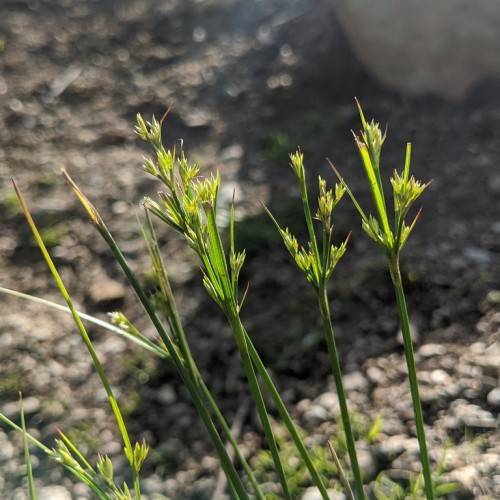
rush
Juncus tenuis
Cycle:
Perennial
Watering:
Average
Hardiness Zone:
2 - 9
Flowers:
Flowers
Sun:
Full sun,part shade
Growth Rate:
Low
Maintenance:
Low
Drought Tolerant:
Yes
Salt Tolerant:
Yes
Care Level:
Low
watering
Rush plants require frequent and fast draining water for best growth and health. Water thoroughly every 7 to 10 days, allowing the soil to dry out completely between waterings. During hot, dry weather, waterings should be increased to once every 5 to 7 days. Water in the early morning so that the foliage has an opportunity to dry off during the day and to avoid fungal diseases.
sunlight
Rush (Juncus tenuis) needs 6-8 hours of direct sunlight per day in order to thrive and produce high quality foliage. This species grows best when it receives full sun during the peak hours of the day, from mid-morning to early afternoon, when the sunlight is most intense. When grown in partial shade, rush may become spindly, with faded, yellowish foliage and may produce fewer flowers. Rush also benefits from some protection from wind during the summer months to help keep it from drying out.
pruning
Rush (Juncus tenuis) is a low-maintenance species of ornamental grass. It tolerates occasional pruning and occasional trimming. For optimal health and aesthetics, pruning and trimming should be done on an annual basis. The best time to prune your rush is in late fall or early winter, before the new growth of spring. To prune, start by cutting back the tallest shoots to the ground to promote a more compact and bushy shape. Additionally, dead or diseased stems should be removed. When pruning, it is important not to remove more than 1-third of the plant's total material per year.
